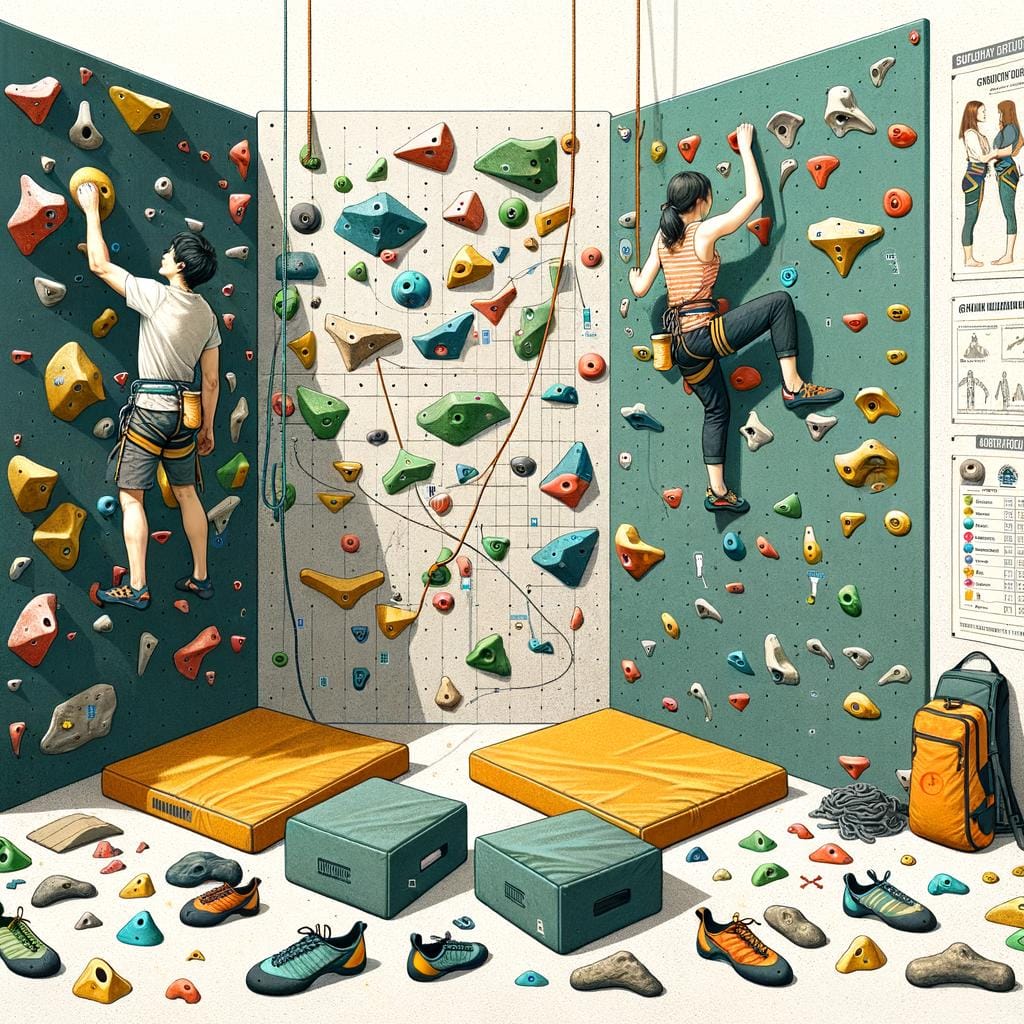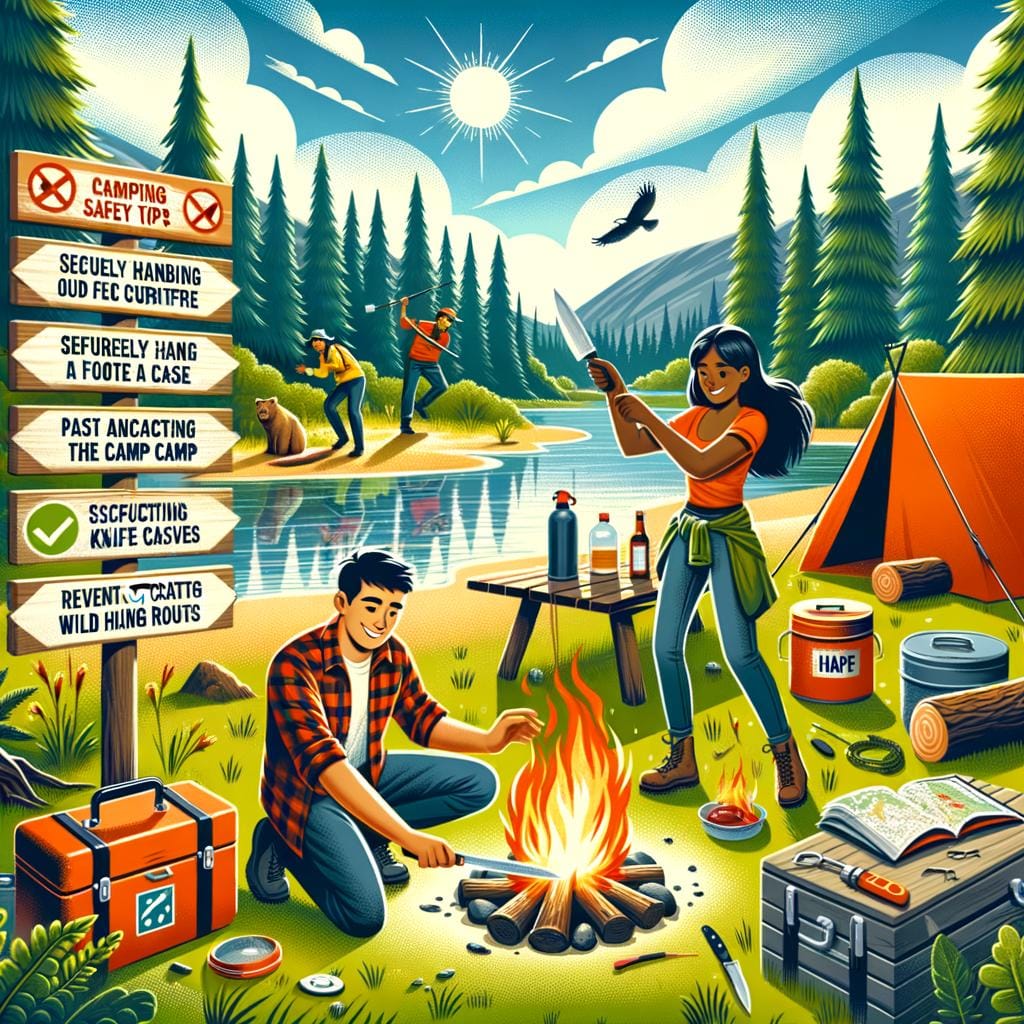Bouldering, a popular form of rock climbing, involves scaling short, challenging routes without the use of ropes. This thrilling activity has gained a dedicated following among adventure enthusiasts and fitness aficionados alike. For those looking to delve into the world of bouldering, understanding some key tips can make all the difference in enhancing your climbing experience.
Whether you’re a beginner or seasoned climber, having the right knowledge and gear is essential for a successful bouldering session. From choosing the appropriate shoes to mastering basic climbing techniques, every aspect plays a crucial role in your performance on the rocks. In this article, we will explore various aspects of bouldering – from gear essentials to safety precautions – to help you navigate this exciting sport with confidence.
By learning about proper bouldering techniques, common mistakes to avoid, and how to build strength specifically for bouldering, you can elevate your climbing skills and overall enjoyment of the sport. Additionally, understanding the differences between outdoor and indoor bouldering, as well as important safety tips and etiquette within the climbing community, will ensure that you have a fulfilling and safe bouldering experience. Stay tuned for valuable insights and guidance on how to make the most out of your bouldering adventures.
Essential Gear for Bouldering
When it comes to bouldering, having the right gear can make a significant difference in your climbing experience. Here is a detailed guide on the essential gear needed to get started on your bouldering journey:
1. Climbing Shoes: The most crucial piece of gear for bouldering is a good pair of climbing shoes. These specialized shoes are designed to provide grip and traction on the rock surface while allowing you to feel and edge on small holds. Look for shoes that fit snugly but not too tight, as comfort plays a significant role in your performance on the wall.
2. Chalk Bag and Chalk: Another essential item for bouldering is a chalk bag with chalk. Chalk helps keep your hands dry and improves friction between your skin and the rock, allowing for better grip. Make sure to refill your chalk bag regularly and keep it handy while climbing.
3. Crash Pads: To protect yourself from falls during bouldering, investing in crash pads is crucial. These large foam pads cushion your landings and reduce the impact on your body when coming down from the wall. Place them strategically under problem areas or highball climbs to ensure a safer landing.
4. Climbing Brush: A climbing brush may seem like a minor item, but it can make a big difference in maintaining good conditions on the holds. Use a stiff-bristled brush to clean off excess chalk, dirt, or debris from handholds and footholds, improving your grip while climbing.
Make sure you have these essential pieces of gear before heading out for your next bouldering session to ensure a safe and enjoyable climbing experience utilizing these bouldering tips.
Choosing the Right Bouldering Shoes
When it comes to bouldering, having the right pair of shoes can make a significant difference in your climbing performance. Bouldering shoes are specially designed to provide grip, support, and precision on small footholds and tricky overhangs. Here are some tips on finding the perfect pair for your climbing style:
- Know Your Climbing Style: Before purchasing bouldering shoes, consider the type of climbing you enjoy the most. If you prefer steep and overhanging routes, you may benefit from shoes with a more aggressive downturn. On the other hand, if you enjoy slab climbing, a flatter shoe with less aggressive features might be more suitable.
- Try Them On: It’s essential to try on different pairs of bouldering shoes to find the right fit. Make sure your toes are snug but not painfully cramped inside the shoe. Keep in mind that sizing can vary between brands, so don’t hesitate to try various options before making a decision.
- Consider Closure Systems: Bouldering shoes come with different closure systems such as lace-up, velcro straps, or slip-on designs. Choose a closure system that provides a secure fit and allows for easy adjustments during your climb.
Finding the perfect bouldering shoes is crucial for maximizing your performance and comfort on the wall. By considering your climbing style, trying on different options, and selecting the right closure system, you can ensure that your bouldering shoes enhance rather than hinder your climbing experience. Don’t hesitate to seek advice from experienced climbers or professional staff at outdoor stores when choosing your next pair of bouldering shoes.
Remember these bouldering tips when shopping for shoes; they could be crucial in taking your climbing skills to new heights. The right pair of bouldering shoes can not only improve your performance but also prevent injuries by providing adequate support and grip while tackling challenging routes. So take the time to research and find the perfect pair that suits your climbing style and preferences.
Bouldering Techniques for Beginners
Bouldering is a thrilling and challenging sport that involves climbing rocks or artificial rock walls without the use of ropes or harnesses. It requires both physical strength and mental focus to navigate through various routes, also known as boulder problems. For beginners looking to venture into the world of bouldering, mastering the basic techniques is essential to ensure a safe and enjoyable climbing experience.
Footwork Fundamentals
One of the key elements in bouldering is proper footwork. When climbing, your feet should bear most of your weight while your hands provide stability and balance. It’s crucial to place your feet precisely on footholds, using them to push yourself up rather than relying solely on your upper body strength. Practice making smooth and deliberate movements with your feet to improve your overall climbing efficiency.
Hand Holds and Grips
Understanding different types of hand holds and grips can significantly impact your performance during a bouldering session. Common hand holds include crimps (small edges), jugs (large holds), slopers (rounded holds), pinches (holds you squeeze between thumb and fingers), and pockets (small holes for fingers). Experiment with various grip techniques such as open-hand grip, closed crimp, pinch grip, and sloper grip to adapt to different hold types while climbing.
Body Positioning
Proper body positioning plays a crucial role in successful bouldering. Pay attention to how you position your body in relation to the wall and holds. Staying close to the wall with hips pressed against it can help maintain balance and stability. Keep your core engaged throughout the climb for better control over movement. Understanding how different body positions affect your reach and stability will improve your overall climbing efficiency.
By incorporating these bouldering tips into your practice sessions, beginners can develop a solid foundation in climbing techniques that will enhance their skills over time. Remember that patience, practice, and perseverance are key components in mastering this exhilarating sport.
Common Bouldering Mistakes to Avoid
Bouldering is a challenging and exhilarating sport that requires physical strength, mental focus, and technique. However, many beginners make common mistakes that can hinder their progress and even lead to injury. By being aware of these pitfalls, climbers can improve their skills and have a safer and more enjoyable bouldering experience.
One of the most common bouldering mistakes beginners make is neglecting proper warm-up routines. Failing to warm up adequately can increase the risk of muscle strains and injuries during climbs. A thorough warm-up should include dynamic stretching exercises to increase blood flow to the muscles and prepare them for the demands of climbing. Taking the time to properly warm up before each session can prevent unnecessary setbacks and keep climbers performing at their best.
Another common mistake in bouldering is relying solely on arm strength rather than engaging the entire body. Climbing efficiently involves utilizing lower body strength, core stability, and balance in addition to upper body strength. Beginners often make the error of pulling themselves up with their arms alone, leading to fatigue and decreased endurance.
By focusing on using legs and core muscles effectively, climbers can conserve energy and improve their overall performance on the wall. Incorporating full-body movements into climbing techniques can also help prevent overuse injuries in the arms and shoulders.
Lastly, overlooking proper footwork is another frequent mistake made by novice climbers. Foot placement is key in bouldering as it provides stability, balance, and support while ascending routes. Beginners may tend to place their feet haphazardly or rely too heavily on handholds instead of using their feet actively.
Taking the time to practice precise foot placements and develop footwork skills will greatly enhance a climber’s ability to tackle more challenging problems efficiently. By focusing on improving foot technique along with hand placement, climbers can climb more effectively and with greater control over their movements on the rock wall.
Building Strength for Bouldering
Bouldering is not just about technique; it also requires a significant amount of strength and endurance to tackle challenging routes. Building your strength is essential to improve your climbing performance and take on more difficult problems. Here, we will discuss some effective workouts and exercises specifically tailored to enhance your bouldering abilities.
Core Strength
One of the most crucial aspects of bouldering is having a strong core. A stable core not only helps with balance but also allows you to make precise movements without wasting energy. Incorporate exercises like planks, Russian twists, and leg raises into your workout routine to strengthen your abdominal muscles, obliques, and lower back. A solid core will help you maintain control while navigating tricky overhangs or challenging slabs.
Finger Strength
Having strong fingers is paramount in bouldering as you rely heavily on them to grip holds and pull yourself up the wall. Fingerboards, hangboards, and campus boards are popular tools for developing finger strength. Hangboarding involves hanging from various grips for a set amount of time to improve finger endurance. Campus training involves dynamic movements between holds to increase power in your fingers. Properly training your fingers will enable you to conquer small crimps and slopers with greater ease.
Upper Body Strength
Strong arms, shoulders, and back are essential for executing powerful moves in bouldering. Pull-ups, push-ups, shoulder presses, and rows are excellent exercises for building upper body strength. Additionally, focusing on antagonistic muscles like the triceps and chest can help prevent imbalances that may lead to injury. By strengthening your upper body, you’ll have the necessary muscle power to reach difficult holds and complete demanding sequences with efficiency.
Incorporating these strength-building workouts into your training regimen will undoubtedly enhance your bouldering performance. Remember that consistency is key when it comes to improving strength for climbing. Combine these exercises with proper rest and recovery periods to avoid burnout and allow your muscles to repair and grow stronger. By prioritizing strength training alongside technique development, you’ll be well-equipped to take on challenging boulder problems with confidence and skill.
Outdoor vs Indoor Bouldering
When it comes to bouldering, both indoor and outdoor settings offer a unique experience for climbers of all levels. Indoor bouldering provides a controlled environment with predictable routes and various climbing walls to suit different skill levels.
It is also a convenient option for those looking to practice regularly without being affected by weather conditions. On the other hand, outdoor bouldering allows climbers to connect with nature, experience different rock formations, and enjoy the thrill of fresh air and natural scenery.
One of the main advantages of indoor bouldering is the accessibility it provides. Climbers can visit gyms that offer bouldering routes tailored for beginners, intermediate, and advanced levels. These facilities often have trained staff members to provide assistance and support as needed. Additionally, indoor bouldering is a great way to meet like-minded individuals and become part of a supportive climbing community.
Despite the benefits of indoor bouldering, many climbers are drawn to the challenges and rewards of outdoor bouldering. Climbing on real rock surfaces requires a different set of skills and techniques compared to artificial walls in gyms. Outdoor locations also offer a sense of adventure and freedom that cannot be replicated indoors. Transitioning from indoor to outdoor bouldering may require some adjustments in terms of mental preparation, route finding, and safety considerations.
| Indoor Bouldering | Outdoor Bouldering |
|---|---|
| Accessible & Controlled Environment | Natural Rock Surfaces & Scenery |
| Training Facilities & Supportive Community | Sense of Adventure & Challenge |
| Varied Routes for Different Skill Levels | Requires Different Skills & Techniques |
Safety Tips for Bouldering
Bouldering is an exhilarating sport that requires focus, strength, and technique. However, like any physical activity, it comes with its own set of risks. That’s why it’s crucial to prioritize safety when bouldering.
One of the essential safety tips for bouldering is proper spotting. Having a spotter can help prevent serious injuries by guiding your fall or cushioning your landing. When spotting, make sure to communicate with your partner and be ready to react quickly if they need assistance.
In addition to spotting, falling techniques are also important to minimize the risk of injury while bouldering. Learning how to fall safely can prevent sprains, strains, or more serious injuries. When falling from a boulder problem, aim to land on your feet with slightly bent knees and roll out the force of impact. Avoid reaching out with your arms to break the fall as this can lead to wrist or shoulder injuries.
Another crucial aspect of safety in bouldering is injury prevention. Warming up before climbing can help prepare your muscles and reduce the risk of strains or pulls. Stretching after your climbing session can also aid in recovery and prevent tightness in muscles.
Additionally, listening to your body and knowing when to take breaks is key to avoiding overuse injuries. By incorporating these safety tips into your bouldering routine, you can enjoy this exciting sport while minimizing the risk of accidents or injuries.
| Bouldering Safety Tips | Details |
|---|---|
| Proper Spotting | Have a spotter, communicate effectively, be ready to assist |
| Falling Techniques | Land on feet with bent knees, roll out impact force, avoid reaching out with arms |
| Injury Prevention | Warm up before climbing, stretch after climbing sessions, listen to your body for rest |
Bouldering Etiquette
In the thrilling world of bouldering, understanding and following proper etiquette is essential for maintaining a safe and respectful climbing environment. As climbers, we share a passion for conquering challenging routes and pushing our limits, but it’s equally important to uphold certain unwritten rules that promote camaraderie and safety within the climbing community. By familiarizing yourself with these guidelines, you can ensure a positive experience for yourself and others on the rock.
One of the key aspects of bouldering etiquette is respecting fellow climbers and sharing the space in a considerate manner. It’s essential to communicate openly with other climbers, especially when sharing routes or spotting each other during climbs.
Being aware of your surroundings and avoiding unnecessary disruptions can make a significant difference in creating a harmonious atmosphere at the bouldering site. Additionally, offering encouragement and support to your climbing peers fosters a sense of community and motivation as you tackle challenging problems together.
Moreover, practicing good safety measures is paramount in bouldering etiquette. Proper spotting techniques, clear communication with spotters, and knowing how to fall safely are crucial elements to prevent injuries while climbing. Remember that everyone has a responsibility to look out for each other’s well-being on the wall. By adhering to these crucial aspects of bouldering etiquette, you not only enhance your own climbing experience but also contribute to building a stronger and more positive climbing community overall.
Frequently Asked Questions
How Do You Get Better at Bouldering?
Improving at bouldering involves regular practice, setting goals, and focusing on strength and technique. Climbing consistently, working on weaknesses, and seeking feedback from experienced climbers can also help boost skills.
What Is the 3 Second Rule in Bouldering?
The 3-second rule in bouldering refers to the general guideline of holding a specific position or hold for no more than 3 seconds while climbing. This rule encourages climbers to move quickly, maintain momentum, and strategize their movements efficiently.
What Not to Do When Bouldering?
When bouldering, it is important not to rush through climbs without proper planning or warm-up. Avoid overgripping holds, using poor technique that can lead to injuries, neglecting safety measures like spotting or crash pads, and getting stuck in a mental rut instead of adapting to challenges effectively.

An avid outdoor enthusiast, writer, and environmental advocate who has spent over two decades exploring the world’s most breathtaking landscapes. With a background in environmental science and a passion for adventure, Frances combines her love for nature with her talent for storytelling to inspire others to embark on their own outdoor journeys.




